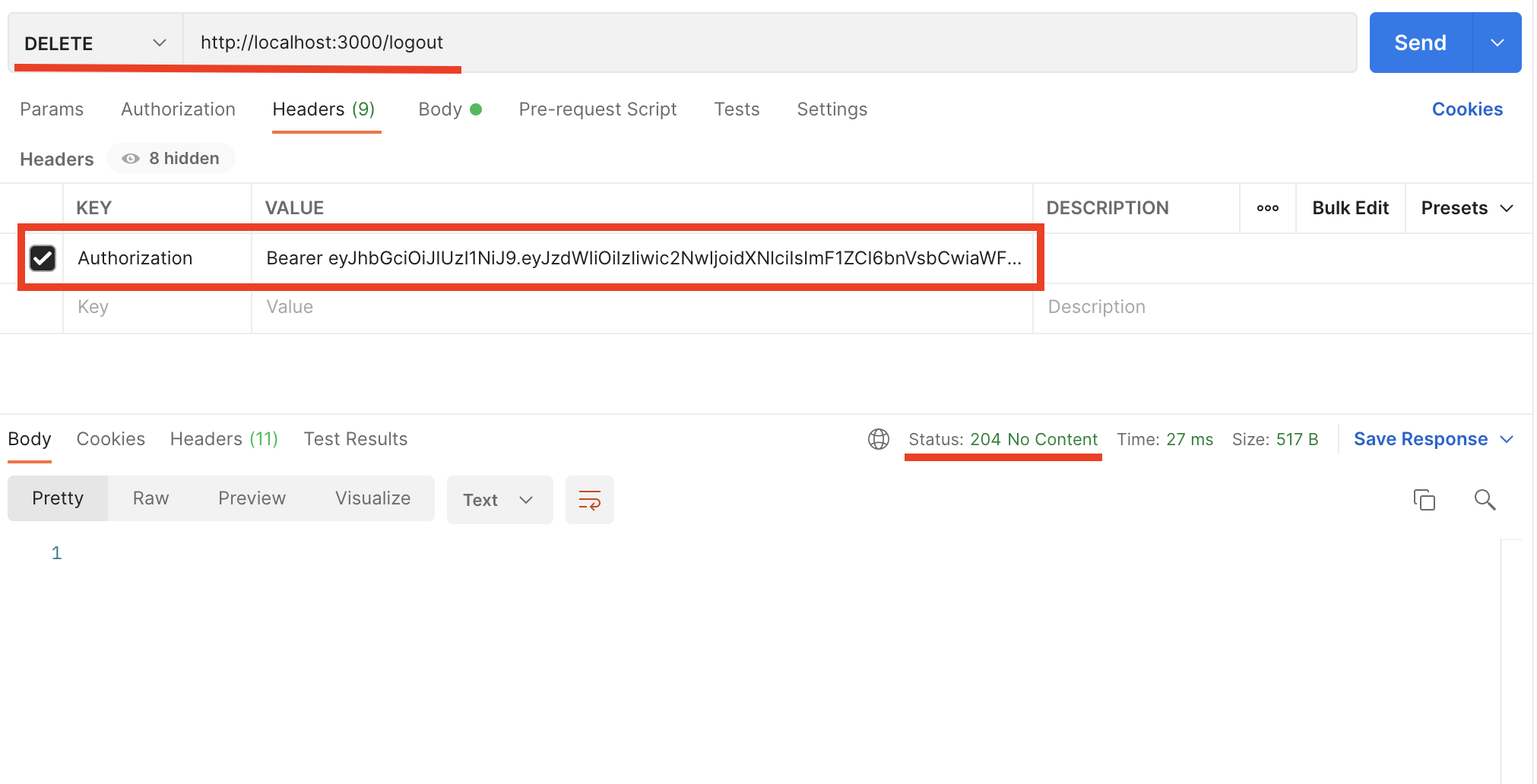rails-base-app
 rails-base-app copied to clipboard
rails-base-app copied to clipboard
An example of Rails 7 and Vue 3 app which is using Vite, and includes Docker configs for building production images and some of the useful tools to start your projects
An example Rails 7 app
This app is using Rails 7, Ruby 3, Vite, Vue 3 and typescript You could use this example app as a base for your new project, or as a tutorial that tells you which steps you need to start a project from scratch
This example app includes some gems and packages that I'm using them for a long time. it wires up a number of things you might use in a real world Rails app, but at the same time it's not loaded up with a million personal opinions.
- As Webpacker has been retired, we are using Vite instead. And it's not fair if I don't say this: Vite is incredible.
Tech stack
I used rails new baseapp -c tailwindcss -d postgresql command to init the project to have based on importmaps and default configs, but I removed importmaps and tailwindcss and all default configs and moved to using Vite instead.
You can see the list of gems that exist in the project with the link of the related commit, so you can easily find what we configured for each gem.
Note there is a commit/branch for each gem/package and adding/changing a code in the repo, and you can see the list of the steps we did in order at the below. e.g. step 1 in the repo was init project and using PostgreSQL. step number 2 was adding RSpec, etc.
Back-end
- 1- PostgreSQL (init project)
- 2- RSpec (commit1) (commit2)
- 3- Factory Bot Rails (commit)
- 4- Faker (commit)
- 5- Database Cleaner (commit)
- 6- SimpleCov (commit)
-
- Rubocop(Check the Healthy app/Backend part)
- 8- Annotate (commit)
- 9- Pry (commit)
- 10- Pagy (commit1) (commit2)
- 11- HasScope (commit)
- 12- JSON:API serializer A fast JSON:API serializer for Ruby Objects (commit)
- jsonapi.rb which provides some features for
jsonapi-serializerPR, commit and PR2 - jsonapi-rspec which provides some beautiful RSpec matchers for JSON API PR
- jsonapi.rb which provides some features for
- 13- Action Cable (commit)
- 14- Redis (commit)
- 15- Sidekiq (commit)
- 16- dotenv (commit)
Front-end
- 17- Vite Removing importmaps and all frontend libraries and Use Vite instead (PR)
- 18- Code quality and format (Check Healthy app/Frontend part)
- 19- Vue.js Vue.js version 3 (PR , PR-fixbug)
- 27- Enabling auth process(and make the app ready) which needed more packages PR:
- axios
- pinia The official state management library for Vue. will be used instead of Vuex
- vue-query
- @babel/types
- We start using TypeScript and Vue3 compistion API here
Healthy app
Frontend
Backend
-
7- RuboCop Code quality and format. First I added rubocop-rails_config gem by these two commits (commit1) (commit2), but after a while, I removed this gem and added rubocop gem and its extensions separately in this PR
-
20- Brakeman Checking Ruby on Rails applications for security vulnerabilities. you can check
config/brakeman.ignoreto see ignore errors (PR) -
21- bundler-audit Patch-level verification for bundler (PR)
-
22- Fasterer Make Rubies code faster by suggestion some speed improvements. check
.fasterer.ymlto enable/disable suggestions (PR) -
23- License Finder Check the licenses of the gems and packages. you can update
doc/dependency_decisions.ymlto manage licenses (PR)
Common
- 24- overcommit to manage and configure Git hooks by managing all healthy app tools. you can check
.overcommit.ymlto enable or disable tools. (PR) - 25- Enabling github action to run
overcommitafter push and pull requests in github. Check.github/workflows/lint.ymlto see the github configs (PR)
Auth
- 26- Devise and Devise::JWT JWT authentication solution Backend PR1, Backend PR2
We are using JWT to authentication using Devise and Devise::JWT gems. If you send a request to log in, the successful response will give you a header called Authorization which has the JWT token as value. and you need to add this header and its value to all of your requests.
Predefined auth routes:
/signup
Request:
curl -XPOST -H "Content-Type: application/json" -d '{ "user": { "email": "[email protected]", "password": "12345678", "password_confirmation": "12345678" } }' http://localhost:3000/signup
Response: Returns the details of the created user
{"data":{"id":"4","type":"user","attributes":{"email":"[email protected]","sign_in_count":1,"created_at":"2022-04-18T17:49:06.798Z"}}}
/login
Request:
curl -XPOST -i -H "Content-Type: application/json" -d '{ "user": { "email": "[email protected]", "password": "12345678" } }' http://localhost:3000/login
Response: includes Authorization in header and details of the loggedin user
HTTP/1.1 200 OK
X-Frame-Options: SAMEORIGIN
X-XSS-Protection: 0
X-Content-Type-Options: nosniff
X-Download-Options: noopen
....
Content-Type: application/vnd.api+json; charset=utf-8
Authorization: Bearer eyJhbGciOiJIUzI1NiJ9.eyJzdWIiOiI0Iiwic2NwIjoidXNlciIsImF1ZCI6bnVsbCwiaWF0IjoxNjUwMzA0MjU3LCJleHAiOjE2NTAzOTA2NTcsImp0aSI6IjM4ZmI4ZGIyLWVlMjgtNDg2Yy05YjE5LTA2NWVmYmQ0ZGE4MCJ9.p8766vPrhiGpPyV2FdShw1ljBx2Os3D1oE_rPjjAYrY
...
{"data":{"id":"4","type":"user","attributes":{"email":"[email protected]","sign_in_count":2,"created_at":"2022-04-18T17:49:06.798Z"}}}

/logout
Request: includes Authorization and its JWT token in the header of DELETE request
curl -XDELETE -H "Authorization: Bearer eyJhbGciOiJIUzI1NiJ9.eyJzdWIiOiI0Iiwic2NwIjoidXNlciIsImF1ZCI6bnVsbCwiaWF0IjoxNjUwMzA0MjU3LCJleHAiOjE2NTAzOTA2NTcsImp0aSI6IjM4ZmI4ZGIyLWVlMjgtNDg2Yy05YjE5LTA2NWVmYmQ0ZGE4MCJ9.p8766vPrhiGpPyV2FdShw1ljBx2Os3D1oE_rPjjAYrY" -H "Content-Type: application/json" http://localhost:3000/logout
Response: nothing

Note We are using JWT to authentication, it means you can use this Rails base app as a vanilla rails app (Backend and frontend together), or as a Rails API app. both you can use.
Apps
I always prefer to have two apps for my projects, one for the part that will be shown public (I called it Website), and the second one for the part that you are managing there (I called it Panel), simplify you need to log in to have access there.
If you can check the codes you can see that there are two layout view files and two actions in application_controller, and two routes in routes.rb file. and for frontend there are two different entrypoints and routers ane etc.
In this case, you can use different technologies and UI Component Libraries in frontend, e.g. use Vuetify for Website and use VueTailwind for Panel. or even (it's a bit headache) but you can use React for Website and use Vue.js for Panel.
Two simple html/css templates have been added for Website and Panel. you can remove them easily

Running this app
You need to do few small steps to run the app
Clone the repo
git clone https://github.com/zakariaf/rails-base-app baseapp
cd baseapp
Copy example file
cp .env.example .env.local
Environment variables defined here(.env), feel free to change or add variables as needed.
This file is ignored from git (Check .gitignore) so it will never be commit.
If you use different values for environment variables in other envs, e.g. test, you need to copy one more: .env.test.local
Note .env.test is used by github workflows.
Setup the project
create databases
rails db:setup
start the project
-
rails server
rails s -
frontend app
yarn dev
Renaming the project
This app is named baseapp and the module is named BaseApp. But for sure you would like to have a different name.
The only thing you need to do is just running the bin/rename-project yourappname YouAppName script.
as you see this script needs 2 arguments:
- First argument: The lower case version of your app's name, such as
myappormy_appdepending on your preference. - First argument: Used for your app's module name. such as
MyApp
bin/rename-project myapp MyApp
This script is going to:
- Perform a number of find / replace actions
- Initialize a new git repo for you (Optionally)
After that, If you're happy with your new project's name you can delete this script.
Or you can keep it around in case you decide to change your project's name later on.
I got the rename script idea and codes from Docker Rails Example project with some small changes.
TODO
- [ ] Add cypress
- [ ] Dockerize
- [ ] automatic deploy process using capistrano
- [ ] add .gitlab-ci






